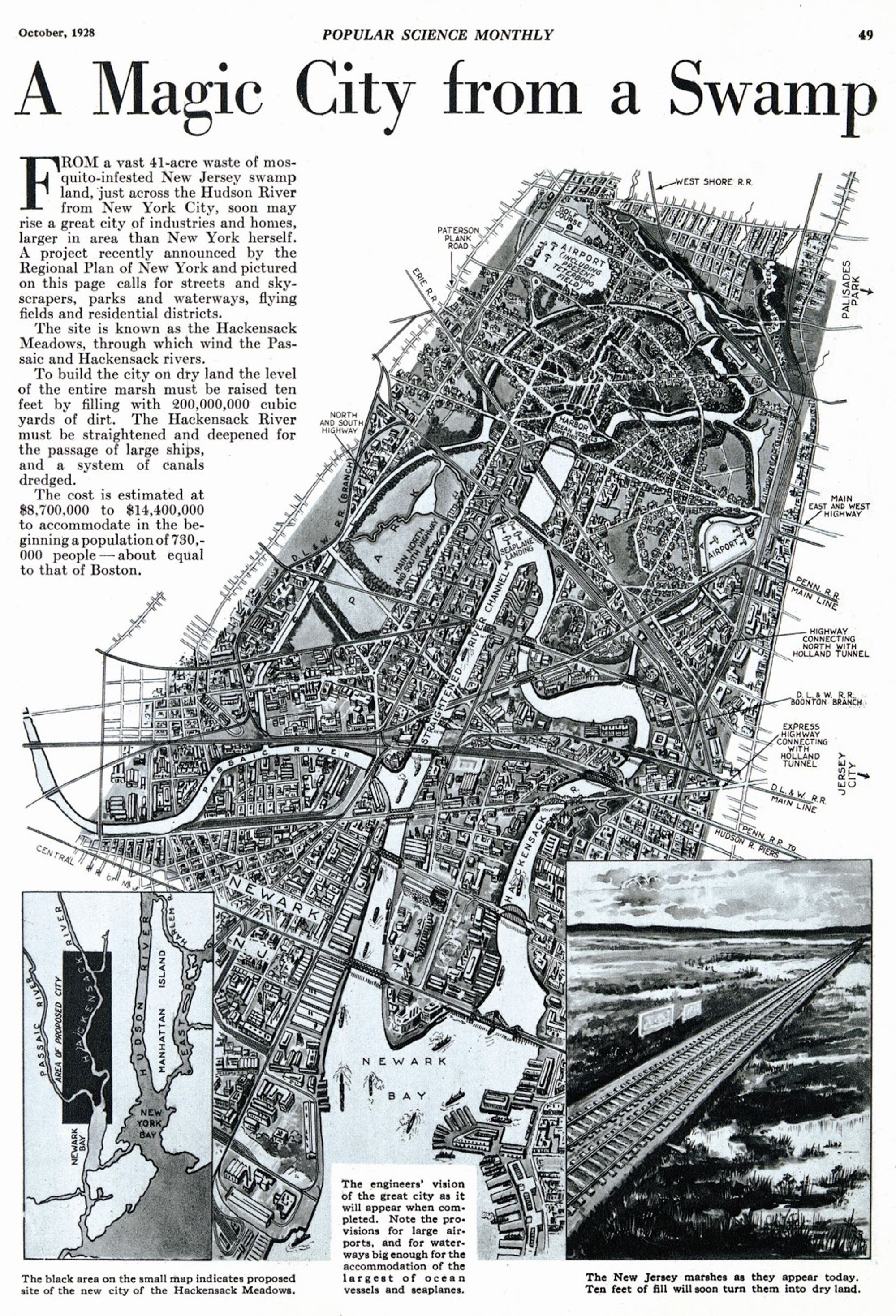Waste As Witness
On a cold Saturday in late February, a small group of us gathered outside of the trailhead of Mill Creek Marsh, near Secaucus, New Jersey. With snaking pathways and inaccessible islets, both abound with shrubbery and overgrowth, Mill Creek Marsh is one of the few preserved marshes left in an area known as the Meadowlands. On that day, the marsh waters were frozen over and a biting wind chill swept across the exposed walking trails. We slowly wandered the area, taking in the sights, sounds, and smells, overwhelmed by such a prodigious environment.
The Meadowlands are beautiful—not in an overt way—for those of us who find romantic qualities hidden beneath the post-industrial landscape. Interspersed with the strip malls, refineries, and office parks are glimpses of a historic marsh ecosystem, which predates Dutch settlements from the 1600s. The area is situated along the Lower Hackensack River, which the native Lenape people call Atchensehaky, or River of Many Bends. Prior to the violent Dutch settlement which introduced extractive expansion technologies, Indigenous people farmed and hunted on the land with minimal ecological disturbance.
Once the site of Atlantic white cedar forests and freshwater marshes which thrived alongside their brackish counterparts, the Meadowlands looks quite different today. Considered commuting land for its proximity to New York City, it’s been excavated to make way for dikes, ditches, roads, and highways. Today, an oil pipeline cuts through even its nature preserve, and the history of heavy industries is apparent in the towers of processing facilities that run adjacent to its roads. The state of New Jersey is currently seeking to designate the Meadowlands as a “Superfund,” or nationally recognized contaminated site.

As the art collective Trash Club, one of our long-standing research focuses has been sites of legacy waste and the different contexts that create them. Though the term “legacy waste” is sometimes used to refer specifically to nuclear waste, we include any toxic matter that has become woven into the fabric of a landscape, including heavy metals and detritus that have layered onto riverbeds and the capped landfills that form artificial hills on otherwise even ground. Today, the state has a more remedial approach to the violence of the past. Saltwater marshes have been restored behind cemented parking lots of strip malls.
At low tide, you can see the remnants of fallen and severed white cedar trees. During our first visit to the Meadowlands, we noticed Phragmites australis, also known as the common reed. It is the most visually prominent species within the Meadowland marshes and all around Northern New Jersey. Considered to be “invasive” to the area, Phragmites australis is now under state management for control and—if some voices prevail—removal.
Ironically, Phragmites australis is better at sequestering the heavy metals that contaminate the marsh’s sediment than its native counterpart, the cordgrass plant. Cordgrass takes up those metals into higher parts of the plant, re-exposing them to the surrounding waters and the animals who might eat their leaves. Phragmites australis does not—the toxic sediments of the river never move past its roots, and remain buried in older layers of the riverbed. This act of river-keeping by Phragmites australis is especially important in face of imminent sea-level rise (another consequence of ecological violence), when cordgrass will likely drown and release heavy metals back into the waters.
In her studies of war and ecological disaster, artist-researcher Susan Schuppli asserts that matter can act as witness to its conditions, exposing the practices that resulted in its genesis. For us, Phragmites australis plays this role of “material witness,” bridging the violent acts of the past with the haphazard remedial impulses of the present.
In honoring the past, present, and future possibilities of these landscapes and their inhabitants, we have resisted practical representations in favor of the imaginative. To do this, we employ a DIY approach that utilizes 3D scanning, modeling, phone based photogrammetry software, and available Google Earth imagery to blend elements of realistic landscapes together with speculative environments.
To create a virtual reality environment of the Meadowlands, we included animated LiDar data and manipulated hydrophone recordings. In the virtual landscape the marsh is waist-level, enveloping the viewer with waves and swells of sound that slowly grow distorted and unfamiliar as time passes. Engulfed in this speculative environment, the viewer is faced with the limitations of their ordinary perception; the VR introduces the microbial details that are normally inscrutable to ordinary perception. The longer one spends within the piece, the more their perspectives dissolve into the rhythms of the digital flora. The virtual landscape acts as a part of a larger whole, which can only be completed with the accompanying experience of the Meadowlands themselves. As this project expands beyond our initial research, we plan to include other forms of information that are even less accessible to human senses.
Our piece celebrates a marsh that has disappeared before, and with projected sea-level rise, threatens to disappear again. With cemented parking lots directly abutting the few precious slices that remain, flood waters will leave little space for the marsh to travel. But Phragmites australis, already a transplant, might just survive.
The planetary challenges of our century require us to reckon with the past and take responsibility for what happens next. Though the tendency is to keep waste out of sight, we must face waste as a material witness. As artists we also bear witness, in embodied ways that do not stop at the edges of our senses. The Meadowlands is but one site from which we cannot afford to look away. ♦
Subscribe to Broadcast